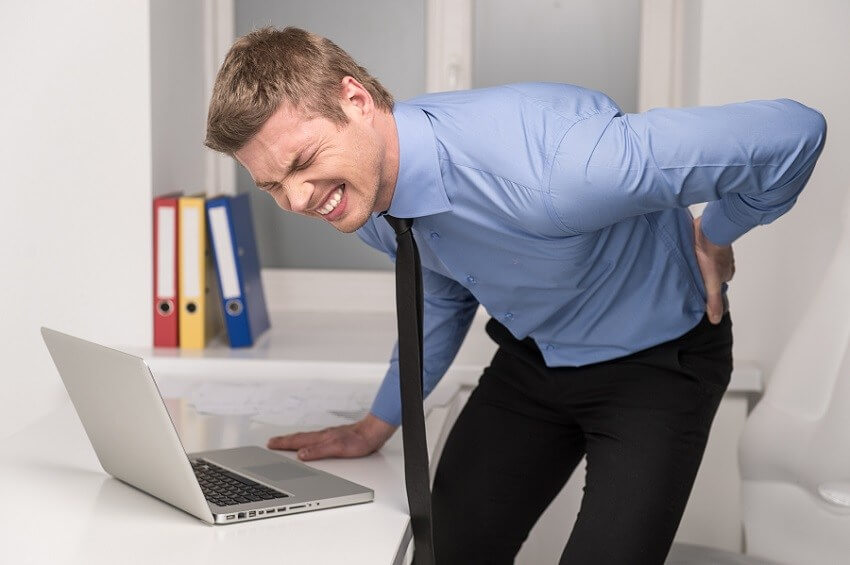If you’re old enough to have had a car that needed warming up prior to driving it, you’re also old enough to be experiencing pain in the knees or hips or lower back when you rise up after prolonged sitting. What you may not know is that your aging body needs the same thing your old car needed – and for exactly the same reason! Parts need time to lubricate.
Here’s a brief primer to help it all make sense:
All long bones in our body have smooth cartilage on the ends. This cartilage helps disperse weight-bearing forces, and helps make movement between the bones nice and easy.
The surface of the cartilage is made even more slippery by the presence of a lubricant that our body makes called synovial fluid. In this picture, its the green stuff in the space between the two bones.
This fluid is made and stored in the synovial membrane (you’ll see that above in red), and is released when stimulated by the stretching of the membrane that occurs during movement.
In a healthy joint, because of the smooth cartilage, and slippery synovial fluid, the load of weight-bearing is significantly decreased, and movement of one surface over the other is like moving wet soap over glass.
But, over time, due to normal use or injury, cartilage breaks down
This picture contains a list of all the nasty ways that cartilage can break down:
When the cartilage has tears in it, it allows the synovial fluid to seep into the bone where it does absolutely no good. The fluid has to be on the surface of the cartilage to make the surface slick and decrease weight-bearing forces. So, while we’re resting on the couch enjoying the game, or sitting in the car driving to see the kids for the holidays, the surface of our cartilage is gradually becoming less lubricated. We don’t really notice this since we’re not moving. But, on rising, when we are bearing weight on our skeleton, the rough surfaces of a “mature” joint, do not have the benefit of the synovial fluid. And that means pain.
Luckily, that pain is temporary, because after even a few steps, there is enough release of synovial fluid from the synovial membrane to decrease the weight-bearing load and allow smooth gliding of the surfaces.
Does this experience sound familiar? Well, you’re in good company! It happens to almost everyone.
There are some good strategies that can be employed to help mitigate the problems associated with unhealthy cartilage. One thing you can do yourself is to change your position frequently. Position changes help to keep the joint surfaces lubricated.
In the clinic, I’ve had some good success teaching folks some simple self- mobilization exercises that are designed to change the part of the joint taking most of the load. This technique, as well as strengthening programs which help to unload the joint can be designed for your particular problem. If you’d like some advice on how you can be more comfortable, I’d love to help! Just call Essential Physical Therapy in Eugene, Oregon at 458-210-2940, or click here to get to our website.
So remember, just like you wouldn’t speed off right after starting your “classic” car, give your ole knees, hips, and back a little warm-up time too. And keep on moving!





